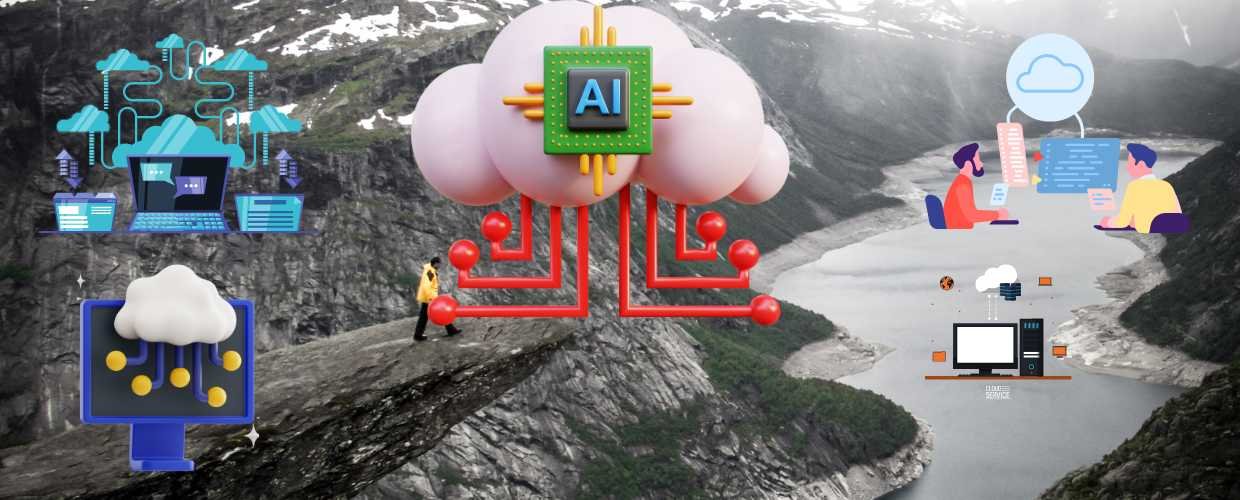In the rapidly evolving landscape of cloud computing, the concept of Cloud Edge Locations has emerged as a crucial bridge between the global reach of cloud services and the need for low-latency, high-performance interactions. These locations act as intermediaries, effectively reducing the distance between end-users or devices and the cloud infrastructure, resulting in optimized data transfer times and improved overall user experiences. In this article, we will delve into the concept of Cloud Edge Locations, explore their components, benefits, challenges, and potential applications, and discuss their significance in shaping the future of distributed computing and digital experiences.
What are Cloud Edge Locations?
Cloud Edge Locations, often referred to as edge nodes, edge servers, or edge points, represent strategically positioned data centers that are geographically distributed to be in close proximity to end-users or devices. In contrast to traditional cloud data centers, which are often located in centralized regions, edge locations bring cloud services and content physically closer to the source of consumption. This architecture aims to reduce latency and optimize data transfer times, enhancing user experiences across various applications and services.
Components of Cloud Edge Locations
Cloud Edge Locations consist of several essential components that collectively contribute to their functionality and effectiveness in optimizing digital interactions.
Edge Servers and Infrastructure
At the core of every edge location are edge servers and infrastructure. These servers are designed and optimized for low-latency communication and rapid data processing. By hosting cloud services, applications, and content, these servers play a pivotal role in ensuring faster response times and minimizing delays for end-users.
Content Caching and Distribution
Edge locations leverage the concept of content caching and distribution to expedite content delivery. Frequently accessed data, media files, and web content are stored locally at the edge. This practice significantly reduces the need to retrieve these resources from distant central data centers, resulting in improved loading times and decreased strain on the centralized cloud infrastructure.
Network Connectivity
The effectiveness of edge locations heavily depends on robust network connectivity. High-speed connections ensure efficient communication between end-users, devices, and central cloud services. These connections facilitate quick data transfer and real-time interactions, which are essential for applications demanding low-latency responsiveness.
Analytics and Processing Capabilities
Some edge locations incorporate advanced analytics and processing capabilities. By enabling computations and analysis to be performed at the edge of the network, these locations reduce the necessity of transmitting large amounts of data to central cloud servers for processing. This approach, known as “edge computing,” enhances response times and allows for more efficient data handling.
Security and Data Privacy Measures
The security and privacy of data processed at edge locations are paramount. Edge locations implement various security measures to protect sensitive information and comply with data protection regulations. These may include encryption, firewalls, intrusion detection systems, and other security protocols.
Benefits of Cloud Edge Locations
The adoption of Cloud Edge Locations offers a range of benefits that significantly impact user experiences, application performance, and data management. Here are some key advantages:
Reduced Latency
The most prominent benefit of edge locations is their ability to reduce latency drastically. Edge locations enable faster data transmission by reducing the physical distance between end-users or devices and the cloud services. This is particularly critical for applications that require real-time interactions, such as video streaming, online gaming, and Internet of Things (IoT) applications.
Enhanced Performance
Edge locations contribute to enhanced performance across a variety of applications. The faster response times and quicker data transfers result in smoother, more seamless experiences for users. Applications that rely on rapid data delivery, such as video conferencing and augmented reality (AR) applications, benefit greatly from improved performance.
Scalability
The scalability of cloud services is significantly improved by leveraging edge locations. As the number of users or devices accessing services increases, edge locations can handle a substantial portion of the load. This distribution of load ensures consistent application performance even during periods of high demand.
Bandwidth Optimization
Edge locations play a key role in optimizing bandwidth usage. Locally caching frequently accessed content minimizes the need for repeated data retrieval from central data centers. This optimization reduces network congestion and enhances overall data delivery efficiency.
Support for IoT and Real-time Applications
Edge locations are pivotal for the success of Internet of Things (IoT) applications and real-time data processing. The low-latency communication and data processing capabilities at the edge enable devices to communicate quickly and efficiently. This support is crucial for IoT applications that demand immediate responses, such as smart home devices and industrial sensors.
Challenges in Implementing Cloud Edge Locations
While the benefits of Cloud Edge Locations are significant, they also come with challenges that must be addressed to capitalize on their potential fully. Here are some notable challenges.
Infrastructure Complexity
Managing a distributed network of edge locations presents infrastructure complexity. From planning and deployment to ongoing maintenance, ensuring consistency and reliability across various locations can be intricate and resource intensive.
Data Synchronization
Ensuring data synchronization across multiple edge locations and central data centers is complex. Maintaining data consistency and integrity is crucial for applications that rely on accurate, up-to-date information.
Security Concerns
Securing edge locations and the data they process is a multifaceted challenge. The distributed nature of edge locations requires the implementation of consistent security measures across all points, necessitating careful consideration of security protocols and compliance with industry standards.
Scalability and Resource Management
Scaling edge locations to handle increasing loads while maintaining optimal performance requires effective resource management and monitoring. Ensuring seamless scaling without performance degradation is essential to provide a consistently high-quality user experience.
Applications of Cloud Edge Locations
Cloud Edge Locations finds applications across various domains, contributing to improved user experiences and optimized data delivery. Some potential applications include.
Content Delivery and Streaming
Edge locations are central to content delivery networks (CDNs) and streaming services. They accelerate content delivery by reducing the distance between the content source and the user, reducing buffering times, and enhancing overall streaming experiences.
IoT and Smart Devices
The success of IoT applications heavily relies on edge locations. They facilitate quick communication, data processing, and decision-making for smart devices. Edge locations enable real-time monitoring, control, and seamless interactions in complex IoT ecosystems.
Online Gaming
Edge locations greatly enhance online gaming experiences. By minimizing latency, these locations ensure that players’ actions immediately impact the game. Reduced lag is essential for competitive and immersive gaming experiences.
Augmented Reality (AR) and Virtual Reality (VR)
Edge locations play a critical role in AR and VR applications, which demand high-performance computing and minimal latency. These technologies require quick data processing and communication to create seamless, immersive experiences.
E-commerce
Edge locations significantly enhance the user experience in e-commerce platforms. By reducing load times and ensuring smooth navigation, they contribute to increased user satisfaction, prolonged engagement, and higher conversion rates.
Future Trends and Considerations
As technology continues to evolve, several trends and considerations are shaping the future of Cloud Edge Locations:
5G and Edge Computing
The rollout of 5G networks aligns well with the capabilities of edge computing. 5G’s ultra-fast data transfer rates and minimal latency are synergistic with edge locations, enhancing the potential for real-time, data-intensive applications.
AI at the Edge
The integration of artificial intelligence (AI) capabilities at the edge is a growing trend. Real-time data analysis and decision-making at the edge enable more intelligent and responsive applications, contributing to enhanced user experiences.
Multi-Cloud Edge Strategies
Organizations are increasingly adopting multi-cloud edge strategies to avoid vendor lock-in and enhance flexibility. Distributing workloads across multiple cloud providers’ edge locations provides redundancy and improved performance, contributing to a more resilient architecture.
Regulatory Compliance
Edge locations must adhere to data protection regulations and privacy laws. Ensuring compliance across distributed locations poses a challenge, requiring careful planning and the implementation of robust data protection measures.
Conclusion
In the era of cloud computing and digital experiences, Cloud Edge Locations serve as a transformative approach to minimizing the gap between centralized cloud services and localized performance requirements. By strategically distributing cloud resources closer to end-users and devices, edge locations significantly enhance data transfer efficiency, reduce latency, and pave the way for real-time interactions. While challenges such as infrastructure complexity and security concerns exist, ongoing technological advancements are actively addressing these obstacles. Cloud Edge Locations have diverse applications spanning content delivery, IoT, gaming, and e-commerce, underscoring their versatility and critical role. As the digital landscape evolves, Cloud Edge Locations will continue to shape the future of distributed computing, ensuring seamless, high-performance digital experiences for users around the globe.












